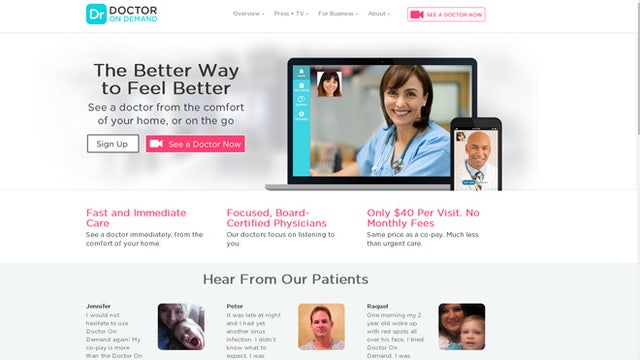Diagnosing the Flu via Skype: Telemedicine Poised to Take Off
You video chat with your friends and family—so why not with your doctor?
Doctors nationwide are increasingly using technology that allows them to have real-time communication with patients, and according to Jonathan Linkous, CEO of the American Telemedicine Association, telemedicine is cutting down on costs and wait times for patients.
“Video conferencing has become very mainstream, and I don’t mean that a startup is using it,” he says. “I mean doctors everywhere are adopting it—it’s a growth area.” He adds that nearly every one of the more than 6,000 hospitals in the U.S. is using technology to communicate with patients in some form.
Currently, 12 million Americans are being served in some form by telemedicine technology, and that number is expected to double by 2015, according to the ATA.
Prices on the technology that allows telemedicine have come down, but still vary greatly depending on the doctor, the size of the operation and how its being used, Linkous explains.
Doctor on Demand is one of the buzziest telemedicine companies in the game right now, thanks to a $21 million funding round announced last week, with big names including British business tycoon Richard Branson.
The company connects users with physicians for quick video consultations.
Adam Jackson, CEO of the San Francisco-based company, says patients with or without insurance can either download the app or access it by desktop. Comcast is one of its biggest distributors, he says.
Users create an account (a process Jackson says “takes 30 seconds), input their symptoms and are then routed to a board-certified doctor within the area.
“You can see each other face to face and the notes you entered beforehand are revealed,” Jackson says. “If it’s medically appropriate, the doctor can submit a prescription for you at the pharmacy of your choosing.”
The company hasn’t released its customer information, but Jackson says it has 1,400 doctors nationwide working on the platform, with several hundred taking shifts at any given moment.
“Five years ago, this was nearly impossible, but video has become an important component of diagnosing people and many states have adopted new rules to allow video if you won’t be there in person,” he says.
Linkous says the videos telemedicine companies use are encrypted, so patient information is protected.
Telemedicine technology will also make lives easier for patients in rural communities, who may lack access to care, says Vishnu Lekraj, senior health insurance analyst for Morningstar.
“It can help them in terms of having to shell out for an expensive trip to a specialist. In terms of video conferences, it can help in screening providers or establishing better communication between doctors and patients without the expense of traveling.”
The technology won’t, however, displace regular doctors or providers, Lekraj says. Instead it will add to their service offerings, and likely bring down the tab for both parties.
“It’s for better communication between providers, allows for data sharing and overall better technological integration will lead to more efficiency and eventually lower costs,” he says. “With payers and providers looking to lower expenses, technology will play a critical role.”
ObamaCare has also placed added strain on physicians, Jackson says, as they work to see more patients due to an influx of insured Americans. The average wait time for a doctor’s appointment in the U.S. is 20 days, according to Jackson.
“In 20 days, your sinus infection will have run its course,” Jackson says. “Our solution allows you to jump the line.”
While the convenience of telemedicine is attractive, it remains to be seen if consumers will feel comfortable enough to actively to communicate health issues online.
“There have been thousands of studies on patient acceptance,” he says. “There has never been a single study where patients don’t like telemedicine. In fact, they like the fact that they have access to a better doctor if they want. They can choose to see a doctor far from their home—there’s tons of benefits for patients, so what’s not to love?”
